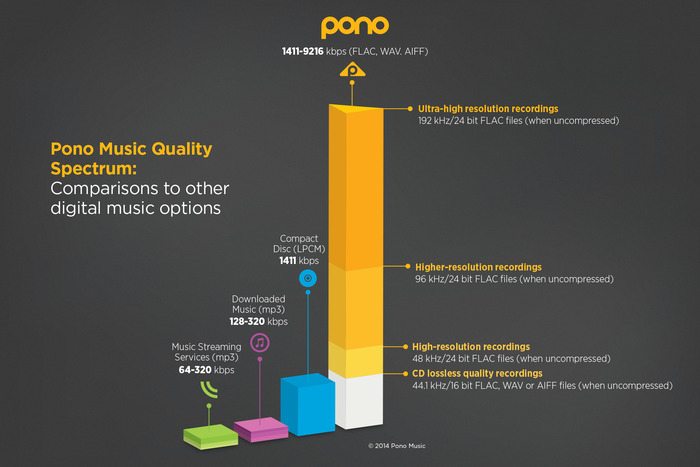By the way, my laptop has D/A and A/D sampling rates up to 192KHz, and bit depth up to 24 bits. It's not that big a deal anymore.
I should try to sample input signals up to 96KHz (1/2 of 192KHz) to see what happens, but when I output a signal, I saw that there was a low-pass filter that rolled off fast beyond 20KHz.
Interesting, but of course, just because a device has some technical capability, that does not mean it is implemented well.
Like the 'mega-pixel' wars in cameras, the higher mega-pixel ratings didn't always mean higher quality - the actual size of the sensor, noise levels, and a few other specs said more about quality than the pixel count.
And I suspect that is the case in your laptop, and a phone. They won't have optimum ground layouts, or low noise power supplies, or high quality audio paths in general. At 16 bits, we are already talking ~ 96db capabilities, and that is already quite demanding on the other components and implementation to keep noise floor that low. So I doubt that increasing the stated bit rating of the DAC in those cases is meaningful.
Getting back to Nyquist rates, higher sample rates, and that 20kHz filter:
Of course there are debates about all things audio, but if we agree that output beyond 20KHz is not providing anything we can hear, I still think there may be advantages to sampling rates beyond the CD standard of 44.1KHz (which means you can theoretically capture sounds up to 22.05Khz).
It takes a sharp filter to pass 20KHz, but block 22.05KHz (often called a 'brick-wall filter' - you really don't want anything >22.05KHz leaking into the converter, that gets 'folded' back to a low frequency, which is a completely non-natural sound, just UGLY! *NOTE BELOW). So a higher sample rate can reduce the demands on that filter.
Now I don't know if a gentler filter is cheaper in practice, but if it is, that means that they can afford to spend more on other components, or provide more silicon real-estate to those other areas. And a gentler filter can have less phase shift in the audio band - again, I'm not sure that is an audible thing or not, but I would not rule these factors out.
So I can at least entertain the idea that a 48KHz, or even 96KHz could provide some benefit
if there were also changes in the filter to take advantage of that rate. But I'm very, very, very skeptical that 128KHz is going to do anything that anyone could hear beyond what 96KHz could/might provide, 96KHz would already really lighten the demands on that filter, compared with 44.1Khz which already sounds very good.
*NOTE on Nyquist for less technical types: An easy visual parallel is the well known effect of seeing a wagon wheel appear to go backwards, or slow, or stop in a motion picture. The frames of film are 'sampling' the wheel at discreet times, just like an ADC 'samples' sound at discreet times. If the object moves fast compared to the sample rate, you see some slower, false difference frequency. Same in audio - if a 22KHz signal gets into a 44.1KHz converter, it will record a 50Hz signal. You will have a bass note appear out of nowhere!
-ERD50


